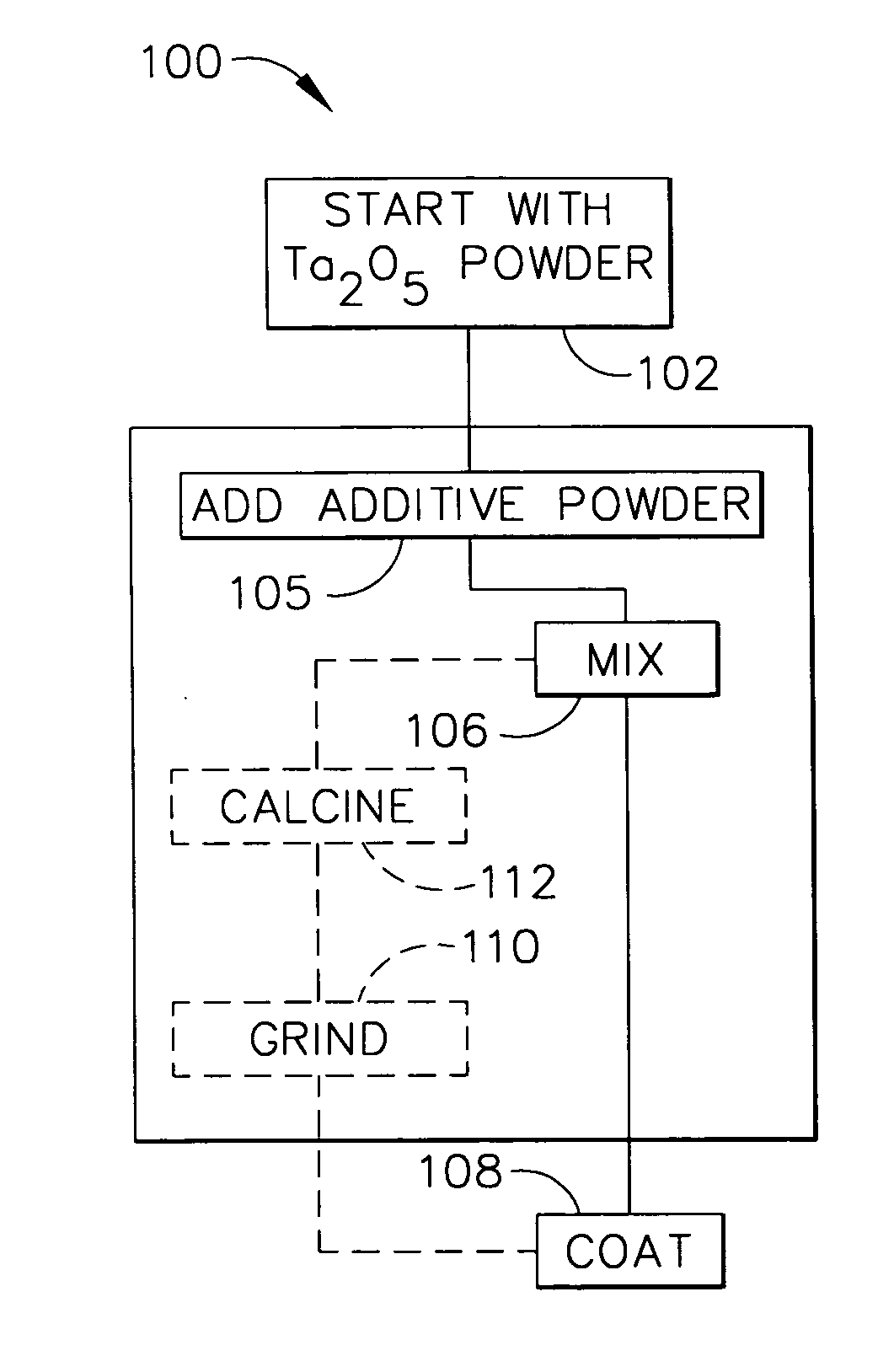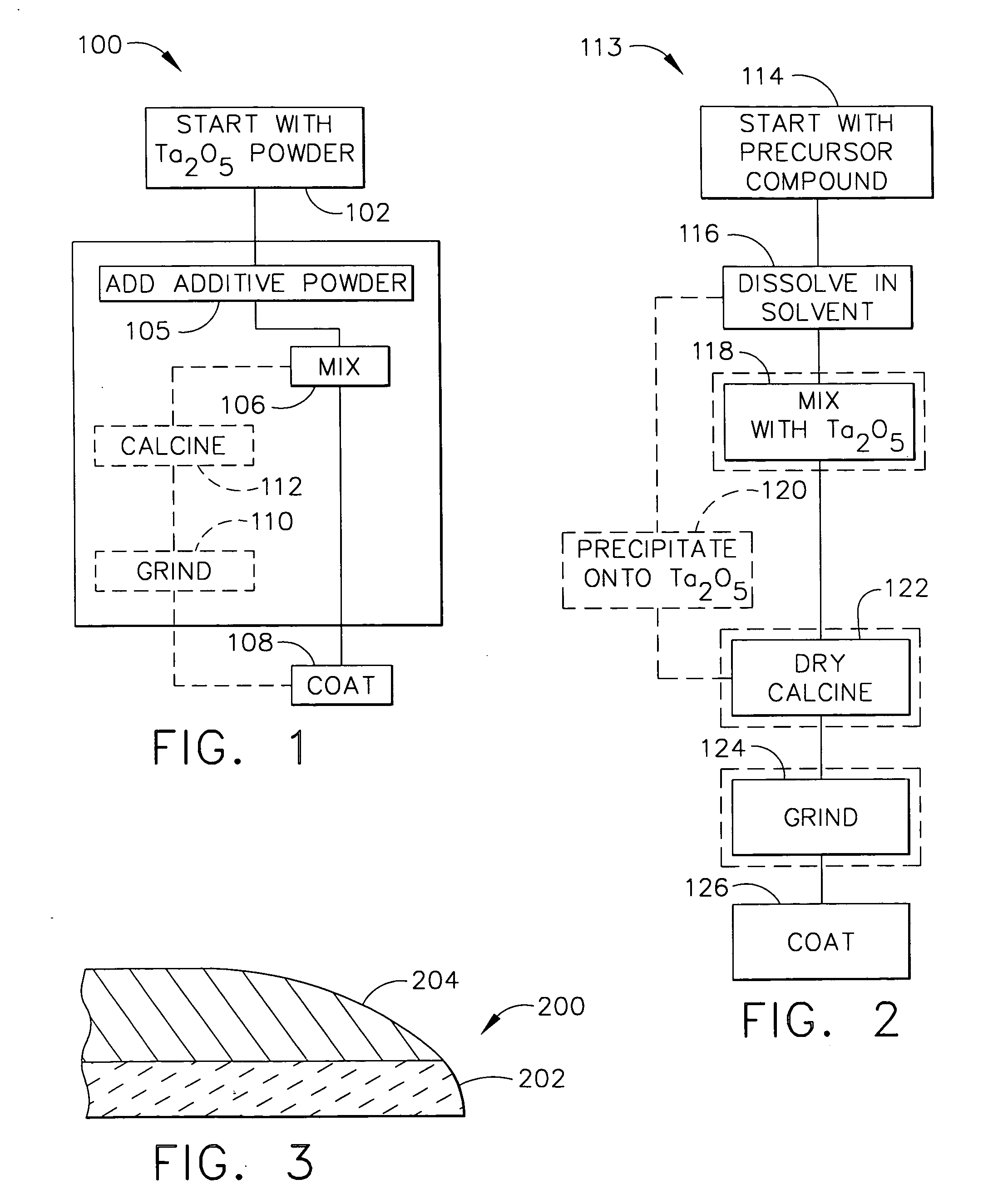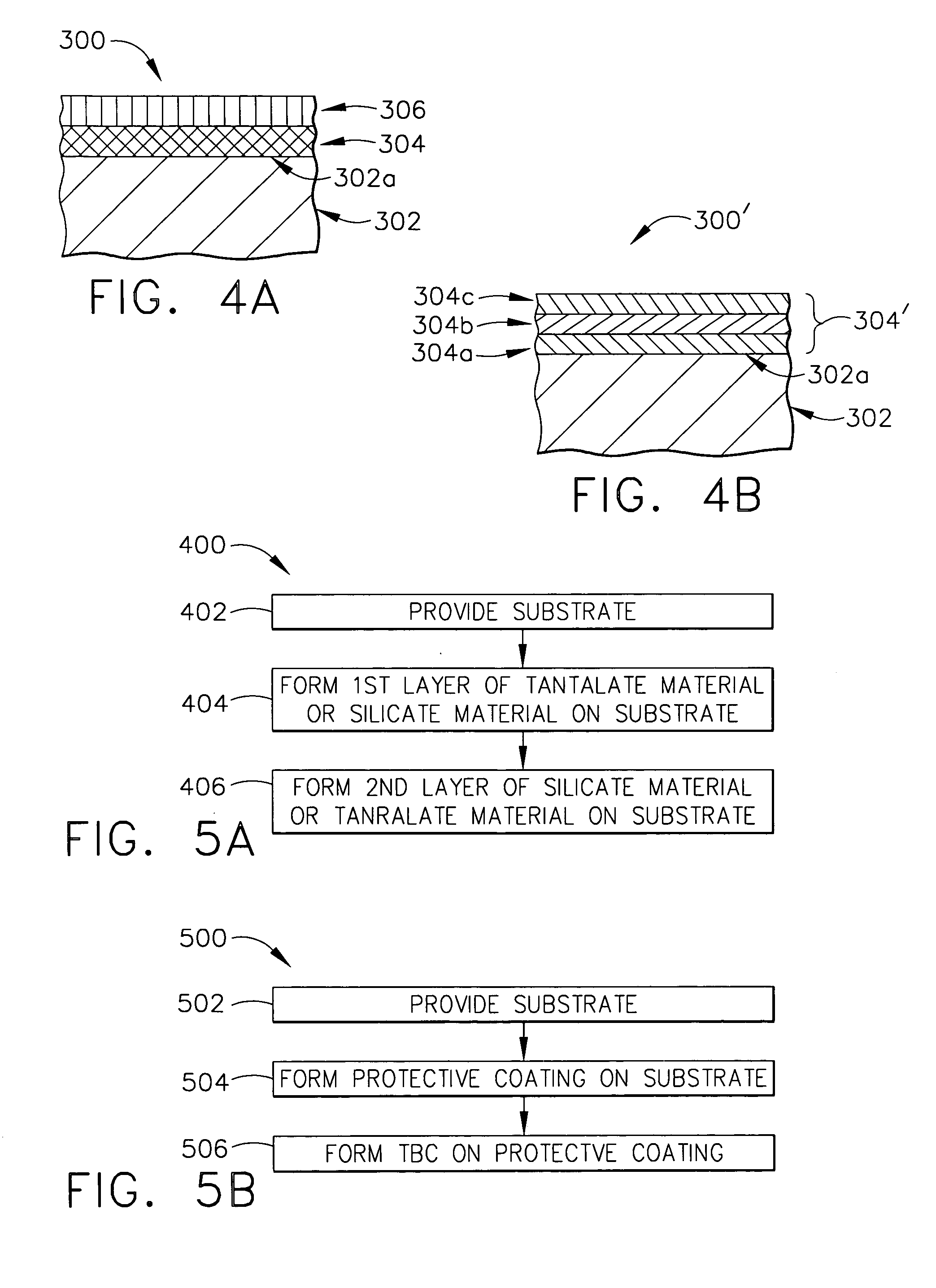Protective coating for ceramic components
a technology of protective coating and ceramic components, applied in the direction of natural mineral layered products, packaging, pipes, etc., can solve the problems of rapid recession of si-based ceramic parts, limited tantalum oxide coating on si-based parts, and adverse effects of si-based ceramics
- Summary
- Abstract
- Description
- Claims
- Application Information
AI Technical Summary
Benefits of technology
Problems solved by technology
Method used
Image
Examples
example 1
[0063] Scandium tantalate powder was prepared as follows. For each batch, about 1 kg of commercial beta Ta2O5 powder was mixed with commercial Sc2O3 powder. The exact ratio of the powders required to form ScTaO4 was used. The powders were mixed in isopropanol in a milling jar for about 2 hours before drying. The dried powder was compacted to a billet using cold issostatic pressing. This billet was then sintered at a temperature in the range of from about 1600 to 1650° C. A small sample from the sintered billet was removed and prepared for X-ray analysis, which confirmed that the sintered solid was ScTaO4.
[0064] The solid sintered billet of ScTaO4 was machined to provide a set of test bars. One such test bar was placed in a furnace at 2400° F. together with a control sample of AS800 Si3N4. Steam was passed through the furnace so that a pressure of 1 atmos of flowing steam passed over the samples. At intervals the weight of the two samples was checked. As for prior tests, the Si3N4 c...
example 2
[0065] Scandium tantalate powder was prepared as follows. In each batch, about 1 Kg of commercial beta Ta2O5 powder was mixed with commercial Sc2O3 powder in isopropanol in a milling jar for about 2 hours before drying. After drying was complete, the powder was sieved to classify the particle size to about 5 to 100 microns range in preparation for plasma spray coating. If the particle size was too fine, a calcining process was included to coarsen the particles. A coating of the above composition was then applied to coupons of silicon nitride and SiC—SiC composite substrates by an air-plasma spraying process. The silicon nitride coupons had an as-sintered surface on which the plasma coating was applied. Alternatively, a grit-blasted machine surface could have been utilized. The coupons were then degreased, and preheated to about 1000° C. by either a torch or furnace. The powder was then injected into a high velocity, high temperature plasma gun and sprayed onto the substrate to form ...
example 3
[0067] Scandium monosilicate (Sc2SiO5) powder was mixed with water to form a slurry. A sample of Si3N4 (AS800) was dipped into the slurry and allowed to dry so that it had a coating over all its surface of the Sc2SiO5. The sample was then dipped again in the slurry and allowed to dry. This process could be repeated but in this case was stopped after the 2 dips. The coating was then sintered on the part at a temperature of between 1400 to 1600° C. Scandium tantalate powder prepared as described in Example 1 was added to water to form a slurry, and the sample dipped in the scandium tantalate slurry to form a coating of scandium tantalate over the monosilicate layer. Dipping in the scandium tantalate slurry was repeated. The coating and part were then sintered as before between 1400 to 1500° C. X-ray was then used to confirm that the two layer coating thus formed was ScTaO4 on Sc2SiO5 and that other phases had not been formed.
[0068] The dual layer coating of ScTaO4 on Sc2SiO5 was test...
PUM
| Property | Measurement | Unit |
|---|---|---|
| Temperature | aaaaa | aaaaa |
| Temperature | aaaaa | aaaaa |
| Thickness | aaaaa | aaaaa |
Abstract
Description
Claims
Application Information
 Login to View More
Login to View More - R&D
- Intellectual Property
- Life Sciences
- Materials
- Tech Scout
- Unparalleled Data Quality
- Higher Quality Content
- 60% Fewer Hallucinations
Browse by: Latest US Patents, China's latest patents, Technical Efficacy Thesaurus, Application Domain, Technology Topic, Popular Technical Reports.
© 2025 PatSnap. All rights reserved.Legal|Privacy policy|Modern Slavery Act Transparency Statement|Sitemap|About US| Contact US: help@patsnap.com



